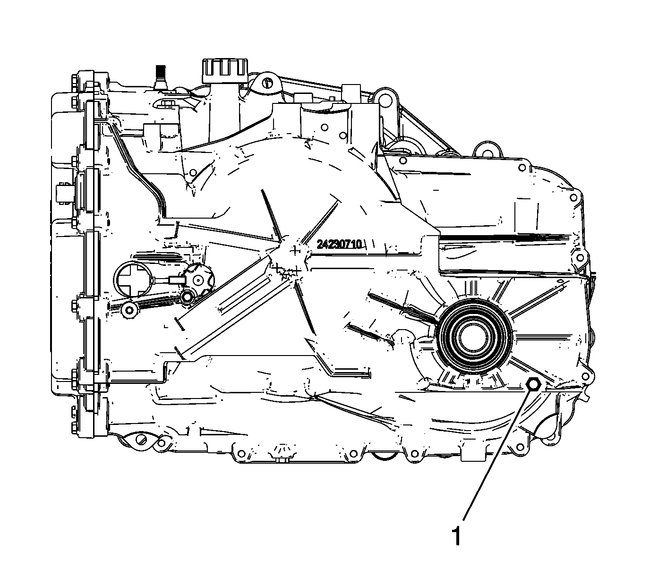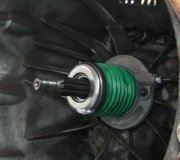Hi,
This sounds like it could be an issue with the transmission control module, a line pressure issue, or if the transmission is original, there could simply be an internal issue.
What I would recommend is to have the can bus system scanned. CAN stands for controller area network. Basically, a few wires tie all the modules/computers together as a network. By doing this type of scan, it should identify where there is a problem. Otherwise, it becomes a guessing game.
Here is a video showing how it is done:
https://youtu.be/InIlnsjOVFA
It doesn't sound like the fluid is low, but have you checked it for level and condition of the fluid? Have you ever had the fluid serviced?
Here are the directions for checking the fluid level and condition. Note: They indicate the use of a scan tool to check transmission temperature. Simply check it once the engine has reached operating temp. I would suggest driving it to that point, and then allow it to sit and idle for a couple of minutes while running.
___________________________________
2011 Chevrolet Malibu L4-2.4L
Transmission Fluid Level and Condition Check
Vehicle Maintenance Fluids Fluid - A/T Testing and Inspection Component Tests and General Diagnostics 6T70/6T75 - Automatic Transmission Transmission Fluid Level and Condition Check
TRANSMISSION FLUID LEVEL AND CONDITION CHECK
Transmission Fluid Level and Condition Check
This procedure checks both the transmission fluid level, as well as the condition of the fluid itself.
Caution: Use Dexron VI transmission fluid only. Failure to use the proper fluid may result in transmission internal damage.
Note: Ensure the transmission has enough fluid in it to safely start the vehicle without damaging the transmission. With the vehicle off there must be at least enough fluid to wet the end of the dipstick bullet. This will ensure that there is enough fluid in the sump to fill the components once the vehicle is started.
Level Checking Procedure
1. Park the vehicle on a level surface, apply the parking brake and place the shift lever in PARK (P).
2. Start the engine.
3. Depress the brake pedal and move the shift lever through each gear range, pausing for about 3 seconds in each range. Then move the shift lever back to PARK (P).
4. Allow the engine to idle 500-800 rpm for at least 1 minute. Release the brake pedal.
5. Keep the engine running and observe the transmission fluid temperature (TFT) using the Driver Information Center or a scan tool.
Note: If the fluid temperature is below the specified range, perform the following procedure to raise the fluid temperature to the specified range.
6. If the TFT reading is not within the required temperature ranges, allow the vehicle to cool, or operate the vehicle until the appropriate TFT is reached.
Drive the vehicle in second gear until the fluid temperature is within the specified range.
Note: Check the transmission fluid level when the TFT is between 180°F and 200°F (82°C and 93°C). The fluid level rises as fluid temperature increases, so it is important to ensure the transmission fluid temperature is within range.
7. Remove the dipstick and wipe it with a clean rag or paper towel.
8. Inspect the fluid color. The fluid should be red or dark brown.
* If the fluid color is very dark or black and has a burnt odor, inspect the fluid for excessive metal particles or other debris. A small amount of "friction" material is a "normal" condition. If large pieces and/or metal particles are noted in the fluid, flush the oil cooler and cooler lines and overhaul the transmission. If there are no signs of transmission internal damage noted, replace the fluid, repair the oil cooler, and flush the cooler lines.
* Fluid that is cloudy or milky or appears to be contaminated with water indicates engine coolant or water contamination. Refer to Engine Coolant/Water in Transmission (See: Automatic Transmission/Transaxle > Symptom Related Diagnostic Procedures > Engine Coolant/Water in Transmission).
9. Install the dipstick and tighten. Wait three seconds and then remove it again.
Note: Always check the fluid level at least twice. Consistent readings are important to maintaining proper fluid level. If inconsistent readings are noted, inspect the transmission vent assembly to ensure it is clean and unclogged.
10. Check both sides of the dipstick and read the lower level.
Note: It is not necessary to get the fluid level all the way up to the MAX mark. Anywhere within the crosshatch band is acceptable.
11. Install and remove the dipstick again to verify the reading.
12. If the fluid level is not within the crosshatch band, and the transmission temperature is between 180°F and 200°F (82°C and 93°C), add or drain fluid as necessary to bring the level into the crosshatch band. If the fluid level is low, add only enough fluid to bring the level into the crosshatch band.
Note: Do not add more than one pint (0.5L) at a time without rechecking the level. Once the oil is on the dipstick bullet, it will not take much more fluid to raise the fluid level into the crosshatch band. Do not overfill. Also, if the fluid level is low, inspect the transmission for leaks. Refer to Fluid Leak Diagnosis (See: Automatic Transmission/Transaxle > Component Tests and General Diagnostics > Fluid Leak Diagnosis).
13. If the fluid level is in the acceptable range, install the dipstick.
14. If the fluid was changed, reset the transmission oil life monitor if applicable.
Fluid Condition Inspection
* Inspect the fluid color. The fluid should be red in color. The fluid may also turn brown form normal use, and does not always indicate contamination.
Note: Fluid that is very dark or black and has a burnt odor usually indicates contamination or overheating.
* If the fluid color is very dark or black and has a burnt odor, inspect the fluid for excessive metal particles or other debris which may indicate transmission damage. Refer to Road Test (See: Automatic Transmission/Transaxle > Initial Inspection and Diagnostic Overview > Road Test) to verify transmission operation. Change the transmission fluid if no other conditions are found.
* Fluid that is cloudy or milky or appears to be contaminated with water indicates engine coolant or water contamination. Refer to Engine Coolant/Water in Transmission (See: Automatic Transmission/Transaxle > Symptom Related Diagnostic Procedures > Engine Coolant/Water in Transmission).
_________________________
Also, here is a link that discusses common repairs for transmission related issues:
https://www.2carpros.com/articles/automatic-transmission-problems
Let me know what you find or if you have other questions.
Take care,
Joe
Thursday, November 19th, 2020 AT 7:30 PM



